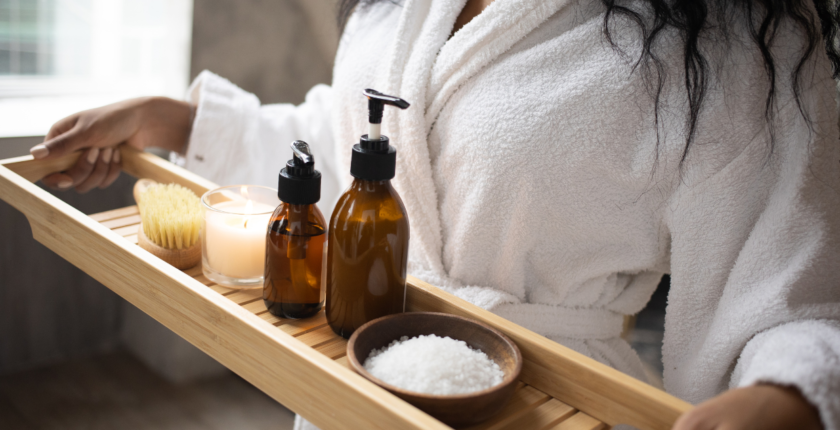From Tension to Tranquility: How Spa Practices Enhance the Quality of Life Journey
In the relentless pursuit of a fulfilling life, the journey often navigates through stress, tension, and the relentless demands of modern living. Amidst this chaotic expedition, the sanctuary of spa practices emerges as a transformative refuge, offering a pathway from tension to tranquility. In this exploration, we delve into the profound ways in which spa practices enhance the quality of life journey, becoming not just indulgent escapes but essential components in the pursuit of holistic well-being.
1. Stress Unveiled: Understanding the Impact on Quality of Life
Before delving into the realm of spa practices, it’s crucial to recognize the toll that stress and tension take on our quality of life.
• Physical Consequences: From muscle tension to compromised immune function, chronic stress can manifest in various physical ailments.
• Mental and Emotional Strain: Stress often leads to mental fatigue, anxiety, and a diminished sense of overall well-being.
2. The Spa Sanctuary: A Haven for Mind and Body
Spa practices offer more than superficial indulgence; they create sanctuaries where the mind and body find solace.
• Tranquil Environments: Spa settings are designed to evoke tranquility, with calming colors, soothing scents, and ambient sounds fostering a sense of peace.
• Escape from Daily Demands: Temporarily stepping away from daily responsibilities allows the mind to recalibrate and reset.
3. Massage Magic: Unwinding the Knots of Tension
Central to spa practices, massages are not just luxurious treats but powerful tools for releasing physical and mental tension.
• Muscle Relaxation: Skilled therapists employ techniques that target tense muscles, promoting relaxation and improved circulation.
• Mental Reset: The soothing touch of a massage induces a state of mental calmness, offering respite from the mental chatter.
4. Aromatherapy Alchemy: Harnessing the Power of Scents
Aromatherapy, a staple in spa practices, utilizes scents to influence mood and alleviate stress.
• Calming Scents: Essential oils like lavender, chamomile, and eucalyptus are renowned for their calming and stress-relieving properties.
• Emotional Well-Being: Inhaling these scents triggers emotional responses, fostering a sense of tranquility and mental clarity.
5. Hydrotherapy: Immersing in Healing Waters
Hydrotherapy, involving water-based treatments, proves invaluable in alleviating physical and mental tension.
• Hot Baths and Saunas: Heat therapies relax muscles, alleviate joint pain, and induce a state of relaxation.
• Cold Plunges: Alternating between hot and cold water enhances circulation, invigorates the body, and stimulates mental alertness.
6. Mindful Meditation: Cultivating Mental Calmness
Spa practices often incorporate mindfulness and meditation, guiding individuals toward mental calmness and presence.
• Guided Meditation: Therapists may lead sessions that encourage focused attention, breath awareness, and mental clarity.
• Stress Reduction: Regular mindfulness practices contribute to long-term stress reduction, enhancing overall quality of life.
7. Holistic Treatments: Nurturing the Mind-Body Connection
Spa practices embrace a holistic approach, recognizing the interconnectedness of the mind and body in the pursuit of well-being.
• Balancing Energy: Treatments like Reiki or energy balancing therapies aim to harmonize the body’s energy centers.
• Emotional Release: Holistic treatments often contribute to emotional release, providing relief from pent-up stress and tension.
8. Culinary Wellness: Spa-Inspired Nutritional Choices
Wellness extends beyond treatments to encompass nourishment, with spa practices influencing dietary habits.
• Nutrient-Rich Choices: Spa-inspired cuisine emphasizes fresh, whole foods rich in nutrients, supporting overall health.
• Mindful Eating: The practice of mindful eating, often encouraged in spa settings, promotes a deeper connection to food and its impact on well-being.
9. Educational Empowerment: Wellness Insights for Daily Life
Spa practices often include educational components, empowering individuals with tools to integrate wellness into their daily routines.
• Self-Care Practices: Educating individuals on self-care rituals extends the benefits of spa practices beyond the treatment room.
• Stress Management Techniques: Learning stress management techniques equips individuals to navigate daily challenges with resilience.
10. Sustainable Wellness: Creating a Lifelong Journey
The impact of spa practices on the quality of life journey is most profound when viewed as a sustainable and lifelong commitment.
• Consistent Self-Care: Regular spa practices contribute to ongoing stress management, supporting a sustainable approach to well-being.
• Holistic Lifestyle Choices: Incorporating lessons learned from spa practices into daily life fosters a holistic and enduring wellness journey.
Conclusion: A Journey Redefined by Tranquility
From tension to tranquility, spa practices redefine the quality of life journey. No longer confined to occasional escapes, these practices become integral components, shaping a life characterized by balance, resilience, and mindful well-being. By embracing the sanctuary of spa experiences, individuals embark on a journey where the pursuit of quality of life is enriched, not just by achievements and milestones, but by moments of profound tranquility that infuse every step with purpose and vitality.


